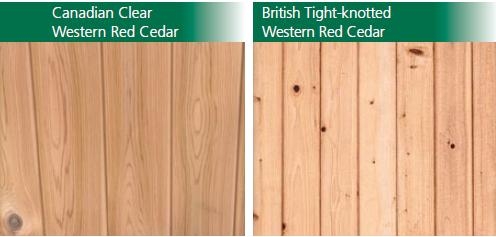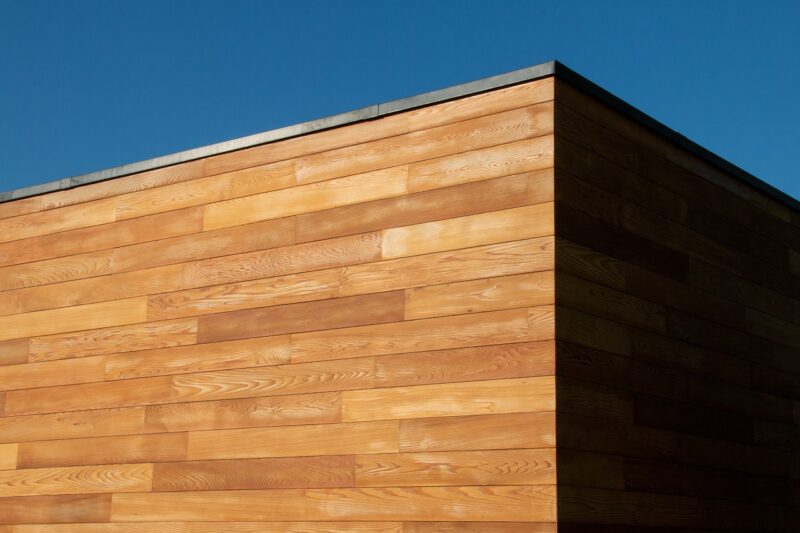Published: 09/07/25 By: Mike Bekin
Looking for a timber species which is perfect for cladding? You cannot go wrong with Cedar. Renowned for its durability, stability and beauty, it is a brilliant choice for both domestic and commercial properties – and even for the odd garden shed! If you start looking for Cedar timber cladding, you will quickly notice that there are two main options available: British or Canadian. So which should you choose for your cladding project? Get the lowdown in this guide, and pick the right type of Cedar timber for your project.
Is Canadian or British Cedar More Durable?
Canadian Red Western Cedar is a durable timber cladding species, perfect for bracing the outdoor weather without a hitch. It is super dense, has very few knots, and is a tough species which will withstand a lot of wear and tear. It also has excellent resistance to rot and insect infestation, making it a low-maintenance choice which is perfectly suited for large buildings where annual staining of your timber cladding would be difficult.
British Cedar is less durable than its Canadian counterpart and contains considerably more knots. While it is still suitable for outdoor timber cladding, it is classified as a Durability Class 3 (moderately durable), compared to the Canadian Cedar’s Class 2 (durable).
For your cladding, this means it will not have quite the same longevity. In order to keep it looking its best over the years and prevent it from degrading, you will need to maintain it with protective treatments, such as timber stains and oils.
Different Life Spans of Cedar Timber
The different durability classes of British and Canadian Cedar will affect how long your cladding lasts. Durability Class 3 – British cedar – will have an expected lifespan of between 10 and 15 years. Canadian Cedar, on the other hand, has a lifespan of 15-25 years, making it a far better choice if you are intending your cladding to last as long as possible.
Is British or Canadian Cedar Timber Cheaper?
What it lacks in durability, British Cedar makes up for in price. British Cedar cladding is usually a fair amount cheaper than Canadian timber cladding, making it ideal for projects where budget is a concern or where decades of longevity are not essential.
Appearance of British vs Canadian Cedar

When it comes to choosing between types of timber cladding, do not forget appearances. Though certainly not everything (especially as timber can be stained and varnished), the beauty of Canadian Cedar is hard to ignore, with shades of red and orange blending with a lighter, cream-toned base. It will bring a rich warmth to your timber cladding project, which is ideal for a contemporary aesthetic.
British Cedar does not have those distinctive red tones, and leans more towards the golden-yellow side of the colour wheel. It is light, rustic, and contains considerably more knots/blemishes, but blends seamlessly into the British landscape.
British and Canadian Timber: Which is Better for Cladding?
If budget is not an issue, we would recommend Canadian Western Red for any external timber cladding projects. It will give you far better longevity with a lot less maintenance, and the beautiful initial colour is an added bonus.
Where cost is a concern, however, you can still go for British Cedar. Boost the longevity of your Cedar cladding by maintaining it properly and applying protective treatments to keep rot and insects at bay.
Learn More at EcoChoice
Still haven’t made up your mind between Canadian and British Cedar for your timber cladding? Do not stress – we can help. Reach out to the EcoChoice team to learn more about which timber species is right for your next project.
Tags: British cedar, Canadian cedar, cedar timber, Cladding
Categories: Insights
